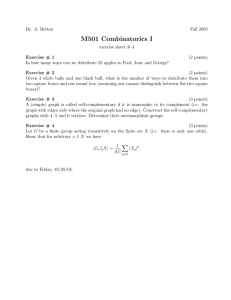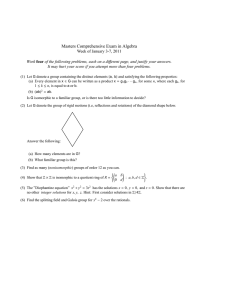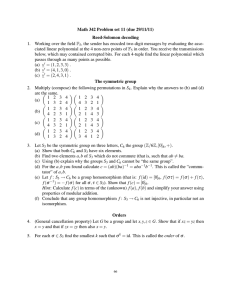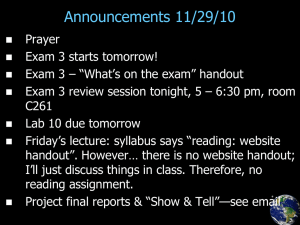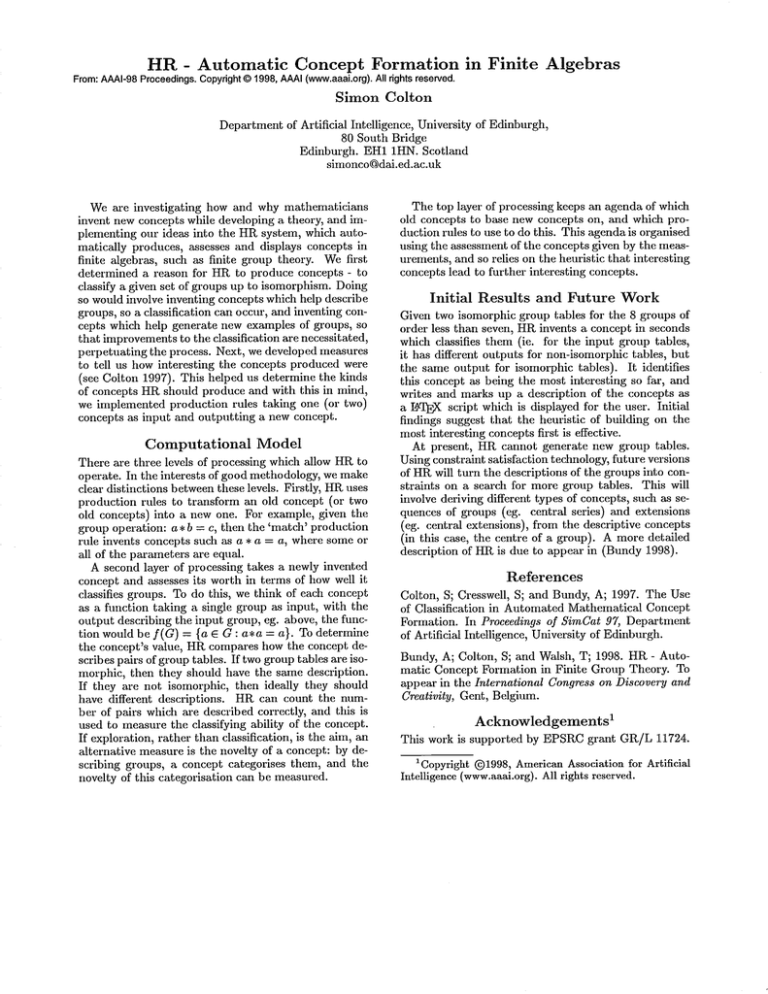
HR - Automatic
Concept Formation
in Finite
From:AAAI-98
Proceedings.
Copyright© 1998,AAAI(www.aaai.org).
All rights reserved.
Algebras
Simon Colton
Department of Artificial
Intelligence, University of Edinburgh,
80 South Bridge
Edinburgh. EH1 1HN. Scotland
simonco@dai.ed.ac.uk
We are investigating
how and why mathematicians
invent new concepts while developing a theory, and implementing our ideas into the HR system, which automatically produces, assesses and displays concepts in
finite algebras, such as finite group theory. We fit’st
determined a reason for HI~ to produce concepts - to
classify a given set of groups up to isomorphism. Doing
so would involve inventing concepts which help describe
groups, so a classification
can occur, and inventing concepts which help generate new examples of groups, so
that improvements to the classification
are necessitated,
perpetuating the process. Next, we developed measures
to tell us how interesting
the concepts produced were
(see Colton 1997). This helped us determine the kinds
of concepts HR. should produce and with this in mind,
we implemented production rules taking one (or two)
concepts as input and outputting a new concept.
Computational
Model
There are three levels of processing which allow HR. to
operate. In the interests of good methodology, we make
clear distinctions between these levels. Firstly, HI~ uses
production rules to transform an old concept (or two
old concepts) into a new one. For example, given the
group operation: a* b = c, then the ’match’ production
rule invents concepts such as a * a -- a, where some or
all of the parameters are equal.
A second layer of processing takes a newly invented
concept and assesses its worth in terms of how well it
classifies groups. To do this, we think of each concept
as a function taking a single group as input, with the
output describing the input group, eg. above, the function would be f(G) -= {a e G: a*a = a}. To determine
the concept’s value, HI~ compares how the concept describes pairs of group tables. If two group tables m’e isomorphic, then they should have the same description.
If they are not isomorphic, then ideally they should
have different
descriptions.
HR can count the number of pairs which are described correctly, and this is
used to measure the classifying ability of the concept.
If exploration, rather than classification, is the aim, an
alternative measure is the novelty of a concept: by describing groups, a concept categorises them, and the
novelty of this categorisation can be measured.
The top layer of processing keeps an agenda of which
old concepts to base new concepts on, and which production rules to use to do this. This agenda is organised
using the assessment of the concepts given by the measurements, and so relies on the heuristic that interesting
concepts lead to further interesting concepts.
Initial
Results
and Future
Work
Given two isomorphic group tables for the 8 groups of
order less than seven, HRinvents a concept in seconds
which classifies
them (ie. for the input group tables,
it has different outputs for non-isomorphic tables, but
the same output for isomorphic tables). It identifies
this concept as being the most interesting so far, and
writes and marks up a description of the concepts as
a I~TEXscript which is displayed for the user. Initial
findings suggest that the heuristic of building on the
most interesting concepts first is effective.
At present, Hl% cannot generate new group tables.
Using constraint satisfaction technology, future versions
of HRwill turn the descriptions of the groups into constraints on a search for more group tables. This will
involve deriving different types of concepts, such as sequences of groups (eg. central series) and extensions
(eg. central extensions), from the descriptive concepts
(in this case, the centre of a group). A more detailed
description of HI~ is due to appear in (Bundy 1998).
References
Colton, S; Cresswell, S; and Bundy, A; 1997. The Use
of Classification
in Automated Mathematical Concept
Formation. In Proceedings of SimCat 97, Department
of Artificial Intelligence, University of Edinburgh.
Bundy, A; Colton, S; and Walsh, T; 1998. HI~ - Automarie Concept Formation in Finite Group Theory. To
appear in the International Congress on Discovery and
Creativity, Gent, Belgium.
1Acknowledgements
This work is supported
by EPSRC grant
GR/L 11724.
1Copyright @1998,American Association for Artificial
Intelligence (www.aaai.org). All rights reserved.

